2017年6月英语六级真题(第一套)
Part I
Writing(30 minutes)
Directions: Suppose you are asked to give advice on whether to attend a vocational college or
auniversity,writeanessaytostateyouropinion.Youarerequiredtowriteatleast
150 words but no more than 200 words.
Part II
Section A
Listening Comprehension
(30 minutes)
Directions: Inthissection,youwillheartwolongconversations.Attheendofeachconversation,
youwillhearfourquestions.Boththeconversationandthequestionswillbespoken
only once. After you hear a question, you must choose the best answer from the four
choicesmarkedA),B),C)andD). ThenmarkthecorrespondingletteronAnswerSheet
I with a single line through the centre.
Questions 1 to 4 are based on the conversation you have just heard.
1. A)Doing enjoyable work.
B)Having friendly colleagues.
C)Earning a competitive salary.
D)Working for supportive bosses.
2. A)31%.
B)20%.
C)25%.
D)73%.
3. A)Those of a small size.
B)Those run by women.
C)Those that are well managed.
D)Those full of skilled workers.
4. A)They can hop from job to job easily.
B)They can win recognition of their work.
C)They can better balance work and life.
D)They can take on more than one job.
Questions 5 to 8 are based on the conversation you have just heard.
5. A)It is a book of European history.
B)It is an introduction of music.
C)It is about the city of Bruges.
�
D)It is a collection of photos.
6. A)When painting the concert hall of Bruges.
B)When vacationing in an Italian coastal city.
C)When taking pictures for a concert catalogue.
D)When writing about Belgium’s coastal regions.
7. A)The entire European coastline will be submerged.
B)The rich heritage of Europe will be lost completely.
C)The seawater of European will be seriously polluted.
D)The major European scenic spots will disappear.
8. A)Its waterways are being increasingly polluted.
B)People cannot get around without using boats.
C)It attracts large numbers of tourists from home and abroad.
D)Tourists use wooden paths to reach their hotels in the morning.
Section B
Directions: In this section, you will hear two passages. At the end of each passage, you will
hearthreeorfourquestions.Boththepassageandthequestionswillbespokenonly
once.Afteryouhearaquestion,youmustchoosethebestanswerfromthefourchoices
marked A), B), C) and D). Then mark the correspondingletteronAnswerSheet1with
a single line through the centre.
Questions 9 to 12 are based on the passage you have just heard.
9. A)They make careful preparations beforehand.
B)They take too many irrelevant factors into account.
C)They spend too much time anticipating their defeat.
D)They try hard to avoid getting off on the wrong foot.
10. A)A person’s nervous system is more complicated than imagined.
B)Golfers usually have positive mental images of themselves.
C)Mental images often interfere with athletes’ performance.
D)Thinking has the same effect on the nervous system as long.
11. A)Anticipate possible problems.
B)Make a list of do’s and don’ts.
C)Picture themselves succeeding.
D)Try to appear more professional.
12. A)She wore a designer dress.
B)She won her first jury trial.
C)She did not speak loud enough.
D)She presented moving pictures.
�
Questions 13 to 15 are based on the passage you have just heard.
13. A)Its long-term effects are yet to be proved.
B)Its health benefits have been overestimated.
C)It helps people to avoid developing breast cancer.
D)It enables patients with diabetes to recover sooner.
14. A)It focused on their ways of life during young adulthood.
B)It tracked their change in food preferences for 20 years.
C)It focused on their difference from men in fiber intake.
D)It tracked their eating habits since their adolescence.
15. A)Fiber may help to reduce hormones in the body.
B)Fiber may bring more benefits to women than men.
C)Fiber may improve the function of heart muscles.
D)Fiber may make blood circulation more smooth.
Section C
Directions: In this section, you will hear three recordings of lectures or talks followed by
three or four questions. The recordings will be played only once. After you hear a
question,youmustchoosethebestanswerfromthefourchoicesmarkedA),B),C)and
D). Then mark the corresponding letter on Answer Sheet 1 with a single line through
the centre.
Questions 16 to 18 are based on the recording you have just heard.
16. A)Observing the changes in marketing.
B)Conducting research on consumer behavior.
C)Studying the hazards of young people drinking.
D)Investigating the impact of media on government.
17. A)It is the cause of many street riots.
B)It is getting worse year by year.
C)It is a chief concern of parents.
D)It is an act of socialising.
18. A)They spent a week studying their own purchasing behavior.
B)They researched the impact of mobile phones on young people.
C)They analysed their family budgets over the years.
D)They conducted a thorough research on advertising.
Questions 19 to 22 are based on the recording you have just heard.
19. A)It is helping its banks to improve efficiency.
�
B)It is trying hard to do away with dirty money.
C)It is the first country to use credit cards in the world.
D)It is likely to give up paper money in the near future.
20. A)Whether it is possible to travel without carrying any physical currency.
B)Whether it is possible to predict how much money one is going to spend.
C)Whether the absence of physical currency causes a person to spend more.
D)Whether the absence of physical currency is going to affect everyday life.
21. A)There was no food service on the train.
B)The service on the train was not good.
C)The restaurant car accepted cash only.
D)The cash in her handbag was missing.
22. A)By putting money into envelopes.
B)By drawing money week by week.
C)By limiting their day-to-day spending.
D)By refusing to buy anything on credit.
Questions 23 to 25 are based on the recording you have just heard.
23. A)Population explosion.
B)Chronic hunger.
C)Extinction of rare species.
D)Environmental deterioration.
24. A)They contribute to overpopulation.
B)About half of them are unintended.
C)They have been brought under control.
D)The majority of them tend to end halfway.
25. A)It is essential to the wellbeing of all species on earth.
B)It is becoming a subject of interdisciplinary research.
C)It is neglected in many of the developing countries.
D)It is beginning to attract postgraduates’ attention.
Part III
Section A
Reading Comprehension
(40 minutes)
Directions: Inthissection,thereisapassagewithtenblanks.Youarerequiredtoselectone
wordforeachblankfromalistofchoicesgiveninawordbankfollowingthepassage.
Readthepassagethroughcarefullybeforemakingyourchoices.Eachchoiceinthebank
isidentifiedbyaletter.PleasemarkthecorrespondingletterforeachitemonAnswer
Sheet 2 with a single line through the centre. You may not use any of the words in
the bank more than once.
�
Let’s all stop judging people who talk to themselves. New research says that those who can’t
seem to keep their inner monologue(独白)in are actually more likely to stay on task, remain
26
better and show improved perception capabilities. Not bad, really, for some extra muttering.
According to a series of experiments published in quarterly journal of experimental
psychology by professors Gary Lupyan and Daniel Swignley, the act of using verbal clues to
27
mental pictures helps people function quicker.
In one experiment, they showed pictures of various objects to twenty
28
and asked them
to find just one of those, a banana. Half were
29
to repeat out loud what they were looking
for and the other half kept their lips
30
. Those who talked to themselves found the banana
slightly faster than those who didn’t, the researchers say. In other experiments, Lupyan and Swignley
found that
31
the name of a common product when on the hunt for it helped quicken someone’s
pace, but talking about uncommon items showed no advantage and slowed you down.
Common research has long held that talking themselves through a task helps children learn,
although doing so when you’ve
32
matured is not a great sign of
33
. The
two professors hope to refute that idea,
34
that just as when kids walk themselves
through a process, adults can benefit from using language not just to communicate, but also to
help “augment thinking”.
Of course, you are still encouraged to keep the talking at library tones and, whatever you
do, keep the information you share simple, like a grocery list. At any
35
, there’s still
such a thing as too much information.
A)apparently
B)arrogance
C)brilliance
D)claiming
E)dedicated
F)focused
G)incur
H)instructed
Section B
I)obscurely
J)sealed
K)spectators
L)trigger
M)uttering
N)volume
O)volunteers
Directions: In this section, you are going to read a passage with ten statements attached to
it.Eachstatementcontainsinformationgiveninoneoftheparagraphs.Identifythe
paragraphfromwhichtheinformationisderived.Youmaychooseaparagraphmorethan
once. Each paragraph is marked with a letter. Answer the questions by marking the
corresponding letter on Answer Sheet 2.
�
Rich Children and Poor Ones Are Raised Very Differently
[A] The lives of children from rich and poor American families look more different than ever
before.
[B] Well-off families are ruled by calendars, with children enrolled in ballet, soccer and
after-school programs, according to a new Pew Research Center survey. There are usually two
parents, who spend a lot of time reading to children and worrying about their anxiety levels
and hectic schedules.
[C] In poor families, meanwhile, children tend to spend their time at home or with extended family,
the survey found. They are more likely to grow up in neighborhoods that their parents say aren’t
great for raising children, and their parents worry about them getting shot, beaten up or in
trouble with the law.
[D] The class differences in child rearing are growing, researchers say—a symptom of widening
inequality with far-reaching consequences. Different upbringings set children on different paths
and can deepen socioeconomic divisions, especially because education is strongly linked to
earnings. Children grow up learning the skills to succeed in their socioeconomic stratum, but
not necessarily others.
[E] “Early childhood experiences can be very consequential for children’s long-term social,
emotional and cognitive development,” said Sean F. Reardon, professor of poverty and inequality
in education at Stanford University. “And because those influence educational success and later
earnings, early childhood experiences cast a lifelong shadow.” The cycle continues: Poorer
parents have less time and fewer resources to invest in their children, which can leave children
less prepared for school and work, which leads to lower earnings.
[F] American parents want similar things for their children, the Pew report and past research
have found: for them to be healthy and happy, honest and ethical, caring and compassionate. There
is no best parenting style or philosophy, researchers say, and across income groups, 92 percent
of parents say they are doing a good job at raising their children. Yet they are doing it quite
differently. Middle-class and higher-income parents see their children as projects in need of
careful cultivation, says Annette Lareau, whose groundbreaking research on the topic was
published in her book UnequalChildhoods:Class,RaceandFamilyLife. They try to develop their
skills through close supervision and organized activities, and teach children to question
authority figures and navigate elite institutions.
�
[G] Working-class parents, meanwhile, believe their children will naturally thrive, and give
them far greater independence and time for free play. They are taught to be compliant and
deferential to adults. There are benefits to both approaches. Working-class children are happier,
more independent, whine less and are closer with family members, Ms. Lareau found. Higher-income
children are more likely to declare boredom and expect their parents to solve their problems.
Yet later on, the more affluent children end up in college and enroute to the middle class, while
working-class children tend to struggle. Children from higher-income families are likely to have
the skills to navigate bureaucracies and succeed in schools and workplaces, Ms. Lareau said.
[H] “Do all parents want the most success for their children? Absolutely,” she said. “Do some
strategies give children more advantages than others in institutions? Probably they do. Will
parents be damaging children if they have one fewer organized activity? No, I really doubt it.”
[I] Social scientists say the differences arise in part because low-income parents have less
money to spend on music class or preschool, and less flexible schedules to take children to museums
or attend school events. Extracurricular activities epitomize the differences in child rearing
in the Pew survey, which was of a nationally representative sample of 1,807 parents. Of families
earning more than $75,000 a year, 84 percent say their children have participated in organized
sports over the past year, 64 percent have done volunteer work and 62 percent have taken lessons
in music, dance or art. Of families earning less than $30,000, 59 percent of children have done
sports, 37 percent have volunteered and 41 percent have taken arts classes.
[J] Especially in affluent families, children start young. Nearly half of high-earning,
college-graduate parents enrolled their children in arts classes before they were 5, compared
with one-fifth of low-income, less-educated parents. Nonetheless, 20 percent of well-off parents
say their children’s schedules are too hectic, compared with 8 percent of poorer parents.
[K] Another example is reading aloud, which studies have shown gives children bigger vocabularies
and better reading comprehension in school. Seventy-one percent of parents with a college degree
say they do it every day, compared with 33 percent of those with a high school diploma or less,
Pew found. White parents are more likely than others to read to their children daily, as are
married parents. Most affluent parents enroll their children in preschool or day care, while
low-income parents are more likely to depend on family members. Discipline techniques vary by
education level: 8 percent of those with a postgraduate degree say they often spank their children,
compared with 22 percent of those with a high school degree or less.
[L] The survey also probed attitudes and anxieties. Interestingly, parents’ attitudes toward
education do not seem to reflect their own educational background as much as a belief in the
�
importance of education for upward mobility. Most American parents say they are not concerned
about their children’s grades as long as they work hard. But 50 percent of poor parents say
it is extremely important to them that their children earn a college degree, compared with 39
percent of wealthier parents.
[M] Less-educated parents, and poorer and black and Latino parents are more likely to believe
that there is no such thing as too much involvement in a child’s education. Parents who are
white, wealthy or college-educated say too much involvement can be bad. Parental anxieties reflect
their circumstances. High-earning parents are much more likely to say they live in a good
neighborhood for raising children. While bullying is parents’ greatest concern over all, nearly
half of low-income parents worry their child will get shot, compared with one-fifth of high-income
parents. They are more worried about their children being depressed or anxious.
[N] In the Pew survey, middle-class families earning between $30,000 and $75,000 a year fell
right between working-class and high-earning parents on issues like the quality of their
neighborhood for raising children, participation in extracurricular activities and involvement
in their children’s education.
[O] Children were not always raised so differently. The achievement gap between children from
high- and low-income families is 30 percent to 40 percent larger among children born in 2001
than those born 25 years earlier, according to Mr. Reardon’s research. People used to live near
people of different income levels; neighborhoods are now more segregated by income. More than
a quarter of children live in single-parent households—a historic high, according to Pew—and
these children are three times as likely to live in poverty as those who live with married parents.
Meanwhile, growing income inequality has coincided with the increasing importance of a college
degree for earning a middle-class wage.
[P] Yet there are recent signs that the gap could be starting to shrink. In the past decade,
even as income inequality has grown, some of the socioeconomic differences in parenting, like
reading to children and going to libraries, have narrowed.
[Q] Public policies aimed at young children have helped, he said, including public preschool
programs and reading initiatives. Addressing disparities in the earliest years, it seems, could
reduce inequality in the next generation
36. Working-class parents teach their children to be obedient and show respect to adults.
37. American parents, whether rich or poor, have similar expectations of their children despite
different ways of parenting.
�
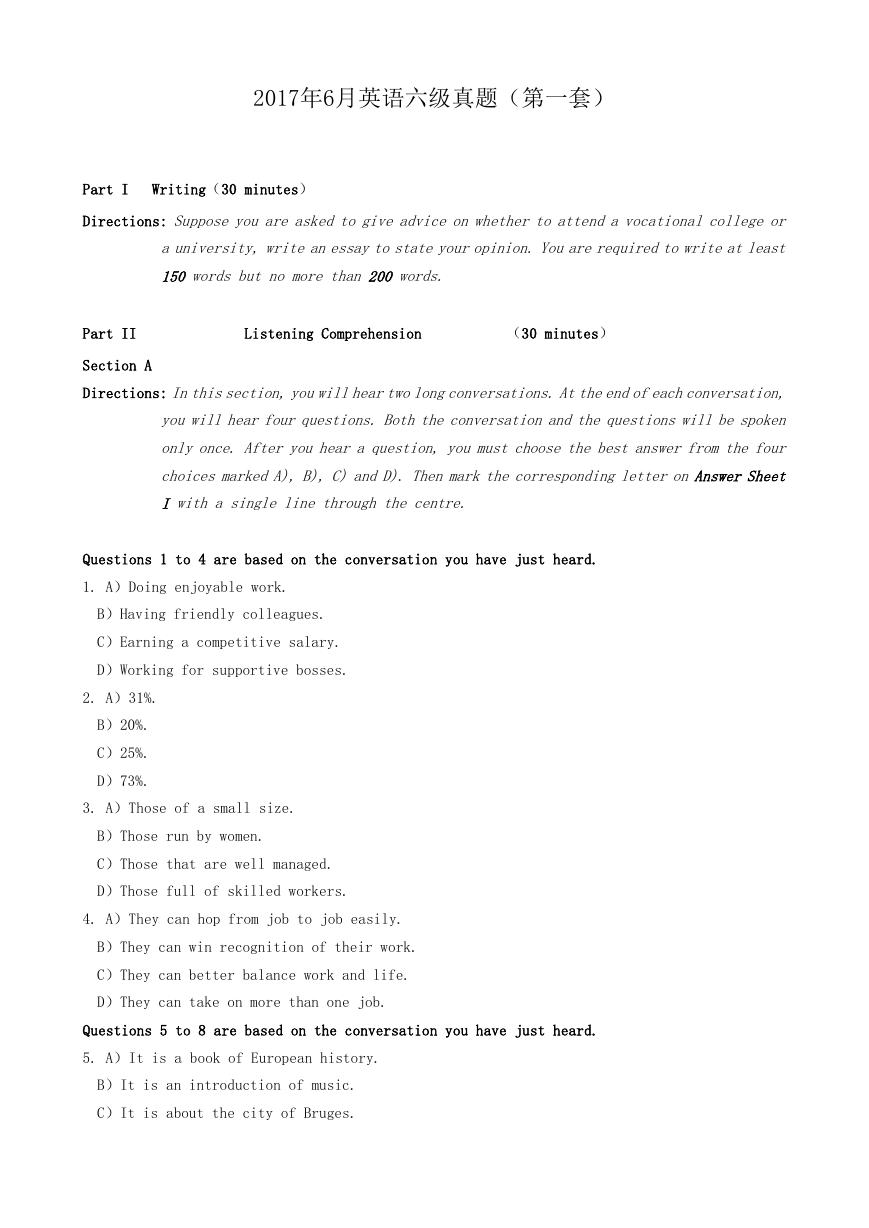















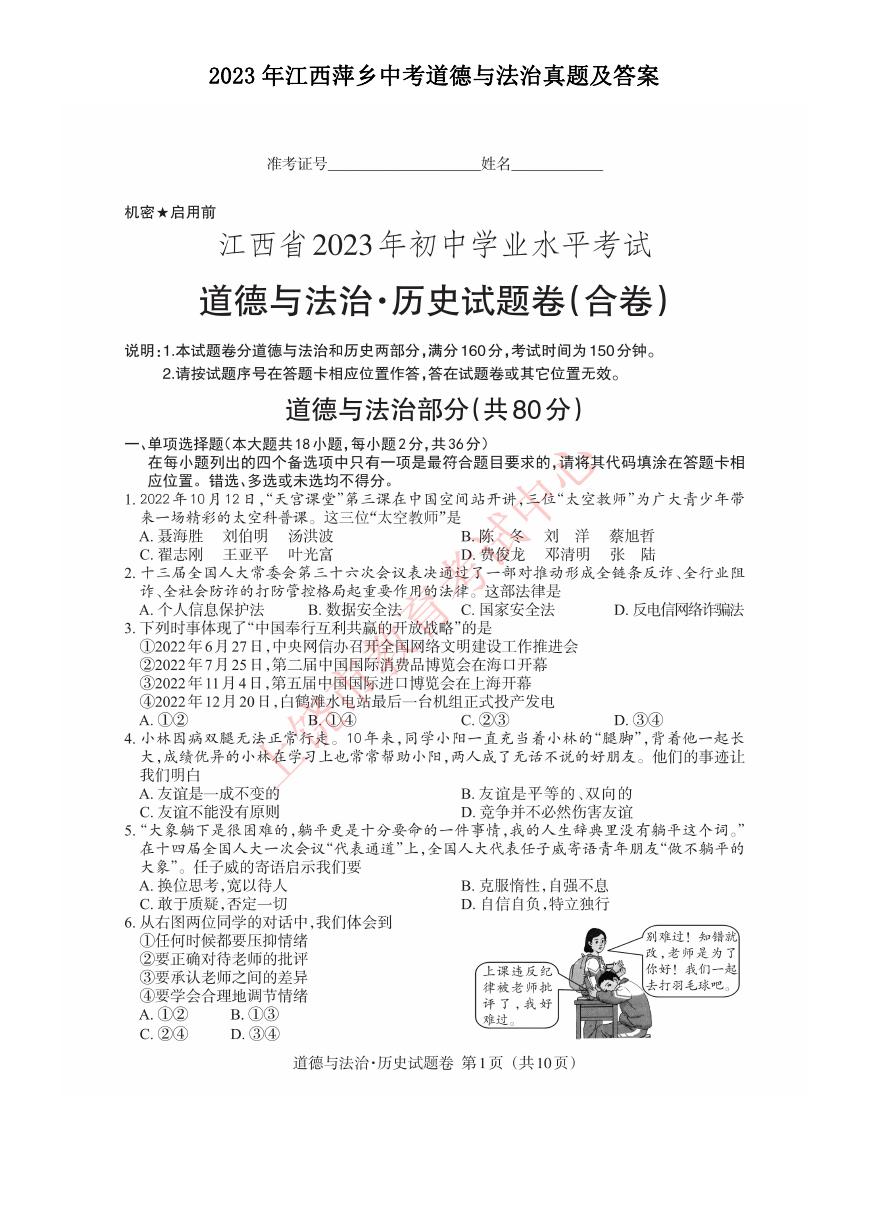 2023年江西萍乡中考道德与法治真题及答案.doc
2023年江西萍乡中考道德与法治真题及答案.doc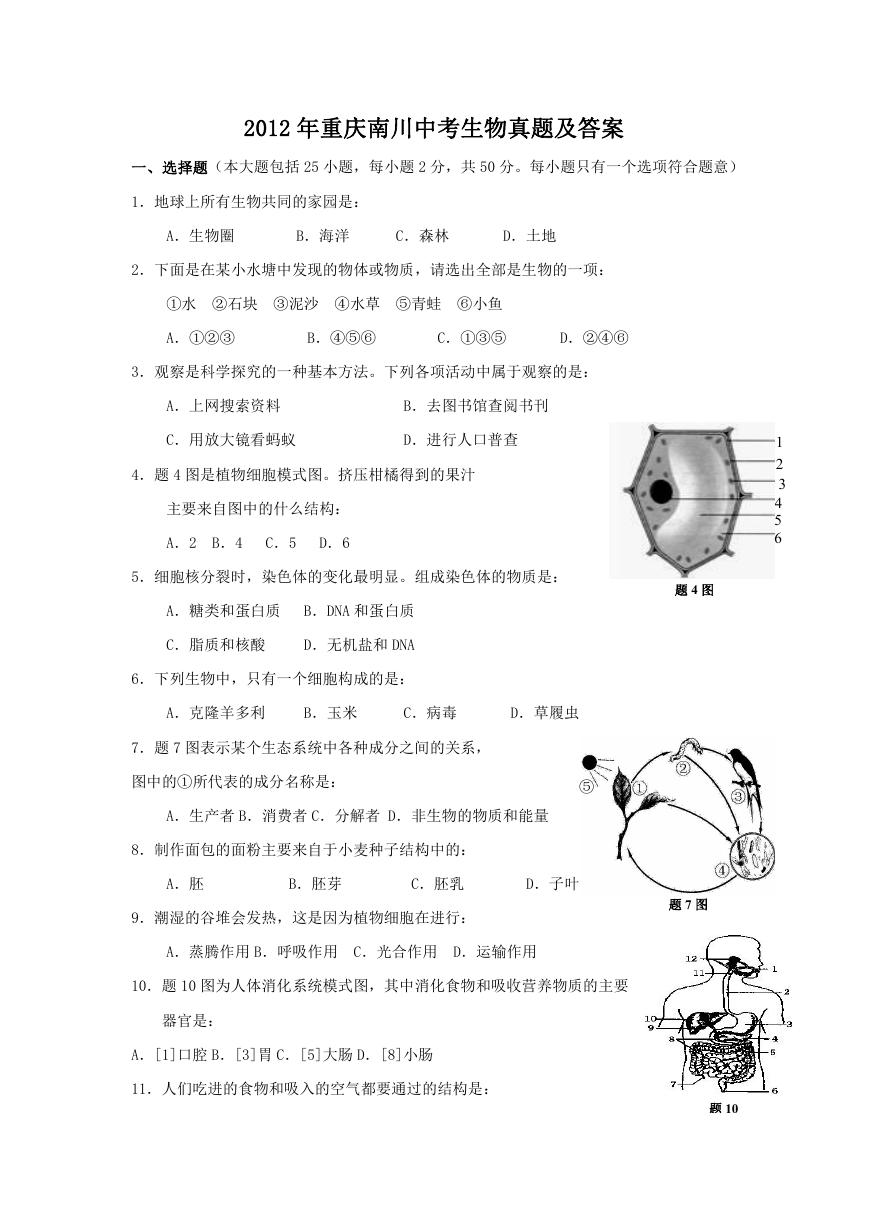 2012年重庆南川中考生物真题及答案.doc
2012年重庆南川中考生物真题及答案.doc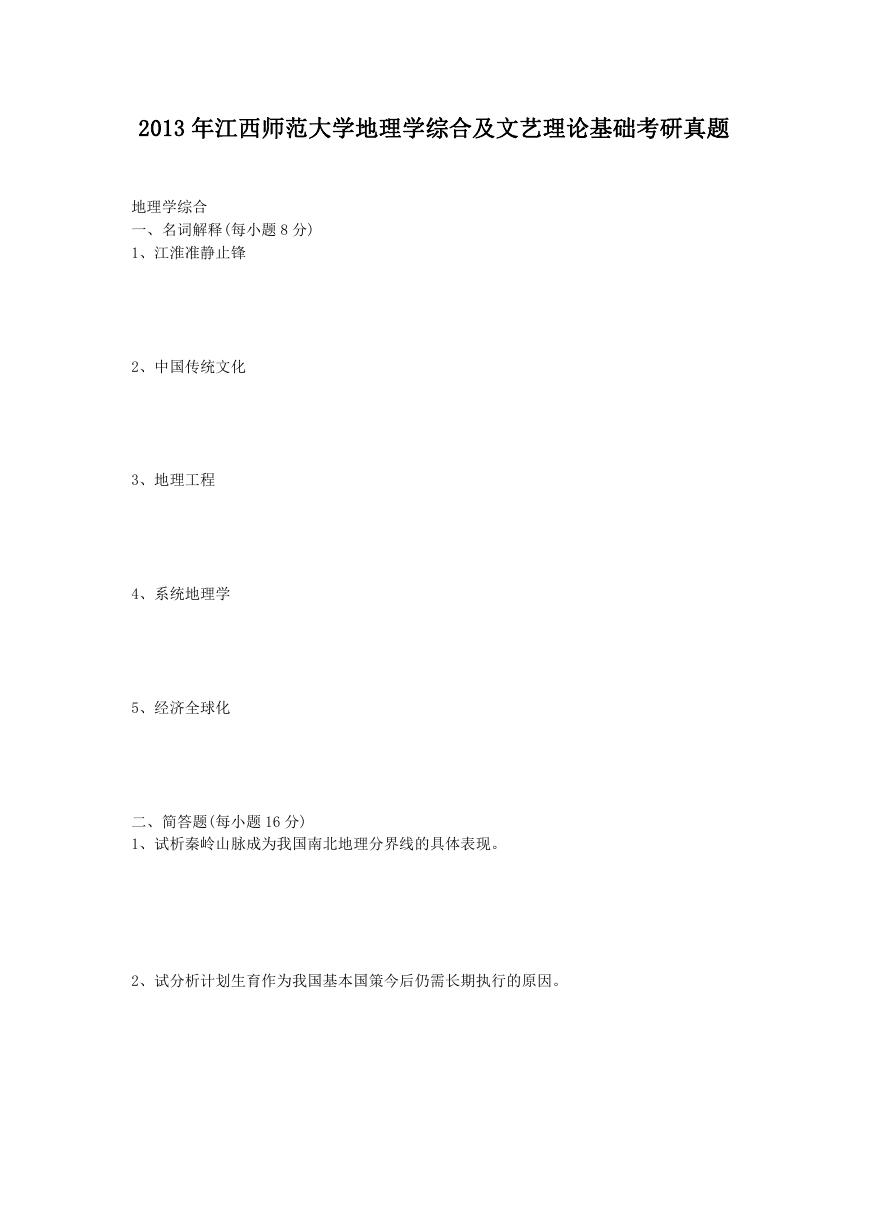 2013年江西师范大学地理学综合及文艺理论基础考研真题.doc
2013年江西师范大学地理学综合及文艺理论基础考研真题.doc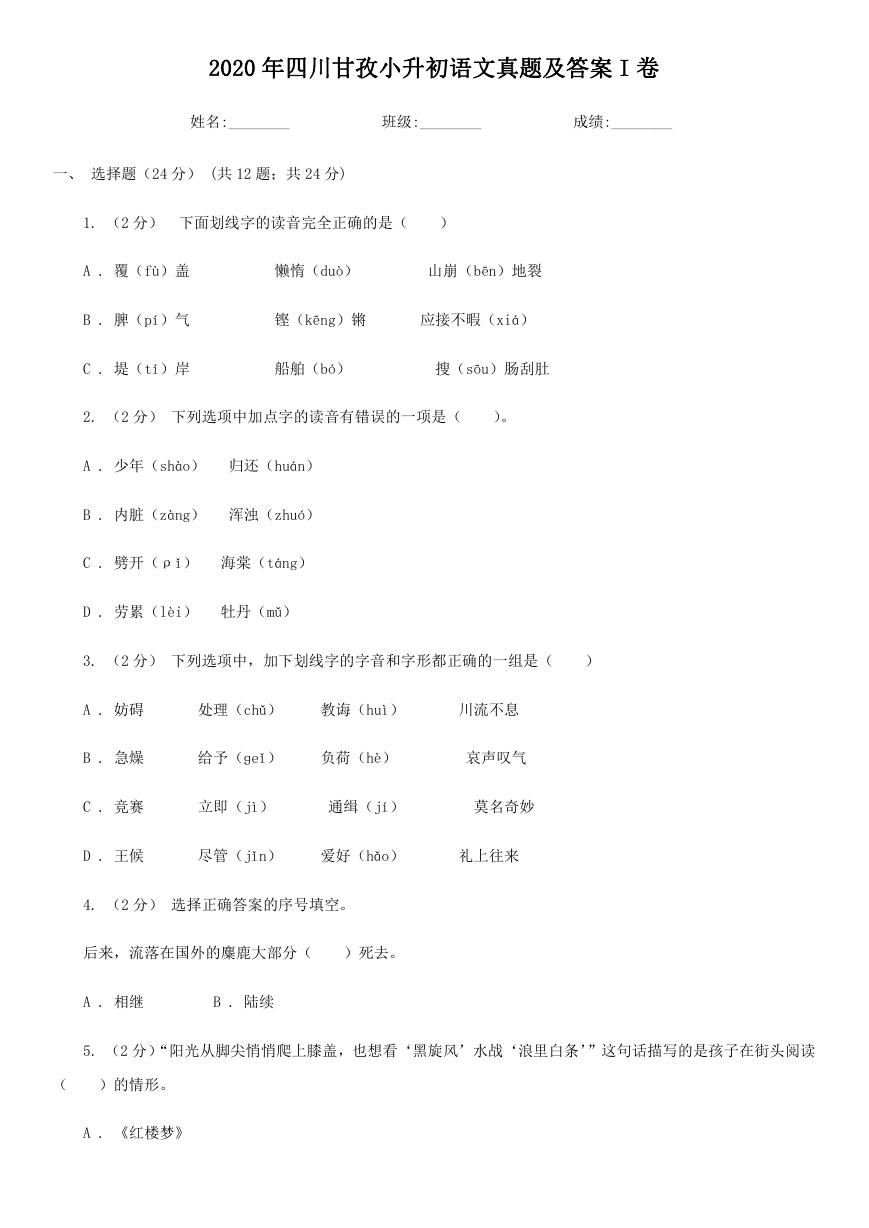 2020年四川甘孜小升初语文真题及答案I卷.doc
2020年四川甘孜小升初语文真题及答案I卷.doc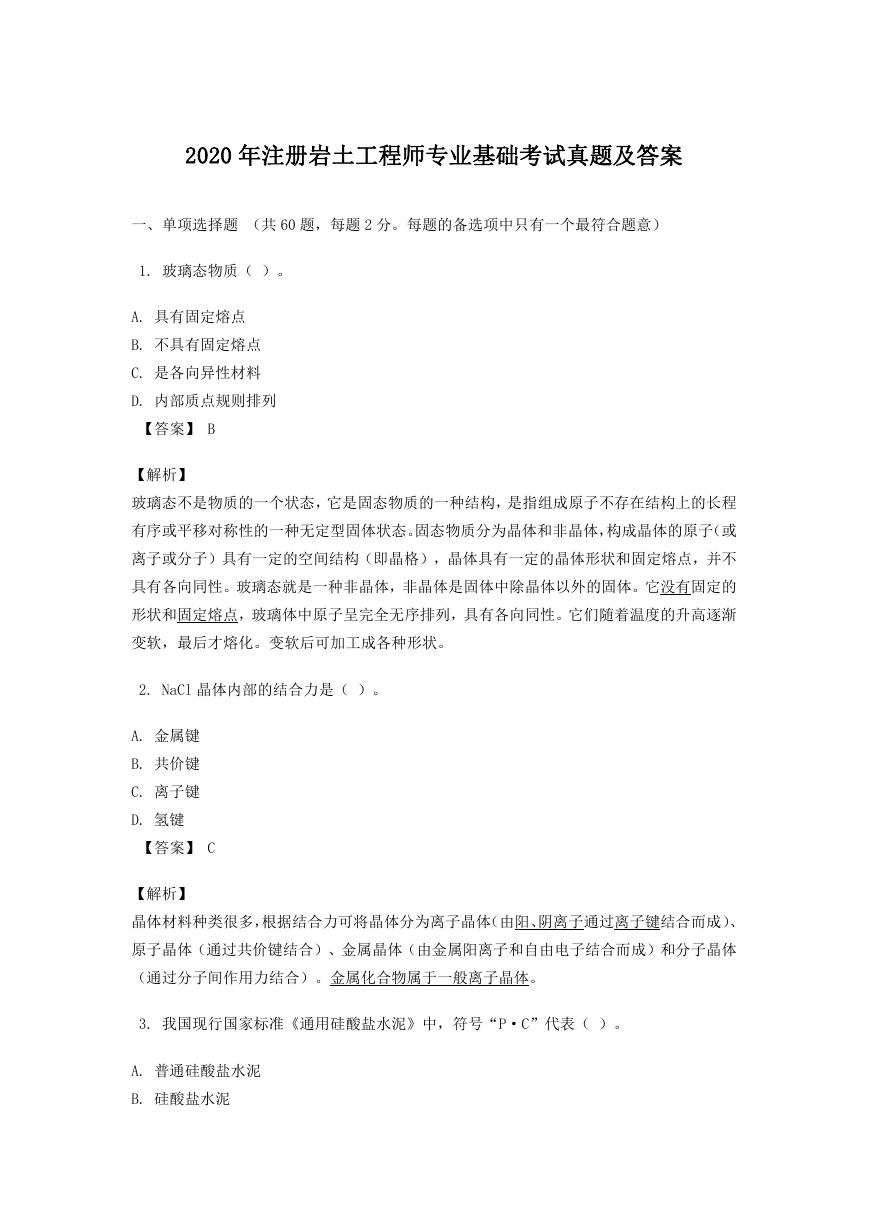 2020年注册岩土工程师专业基础考试真题及答案.doc
2020年注册岩土工程师专业基础考试真题及答案.doc 2023-2024学年福建省厦门市九年级上学期数学月考试题及答案.doc
2023-2024学年福建省厦门市九年级上学期数学月考试题及答案.doc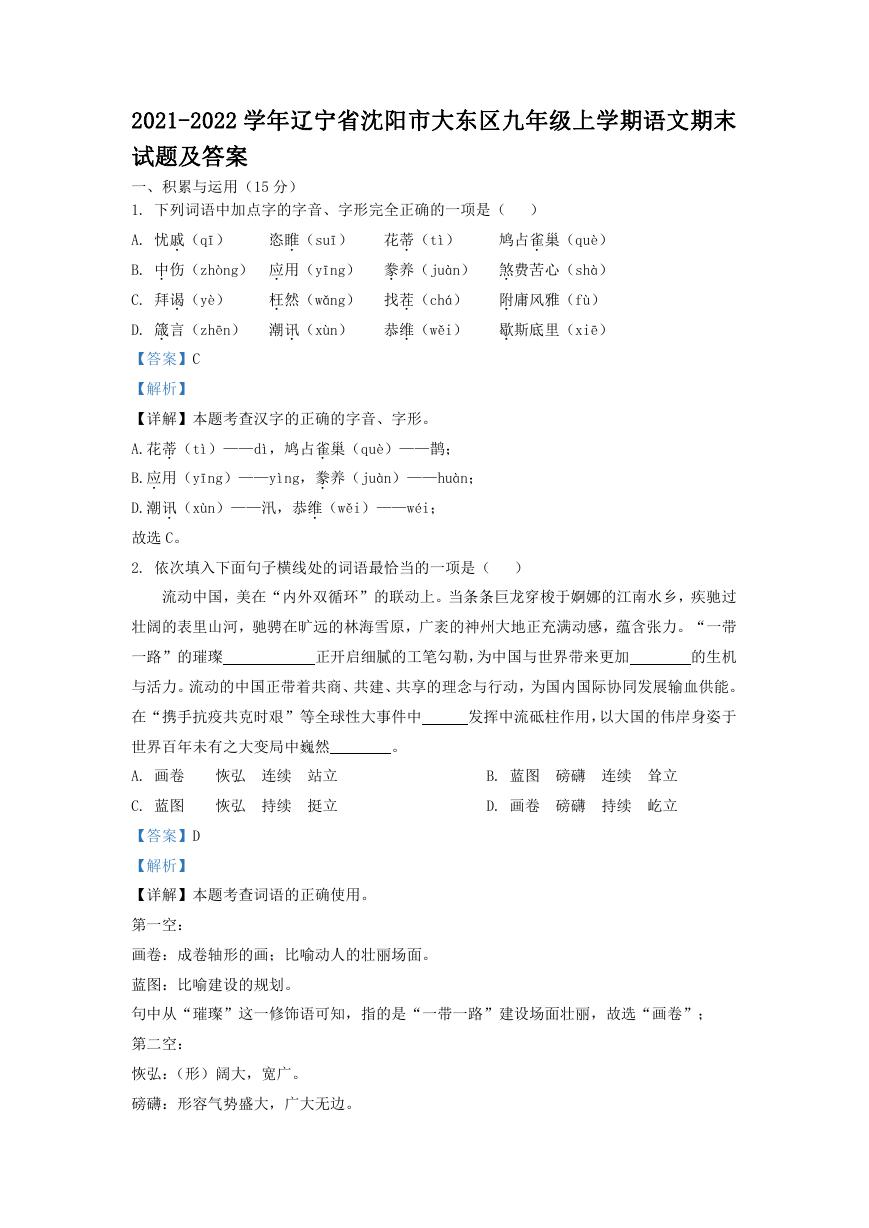 2021-2022学年辽宁省沈阳市大东区九年级上学期语文期末试题及答案.doc
2021-2022学年辽宁省沈阳市大东区九年级上学期语文期末试题及答案.doc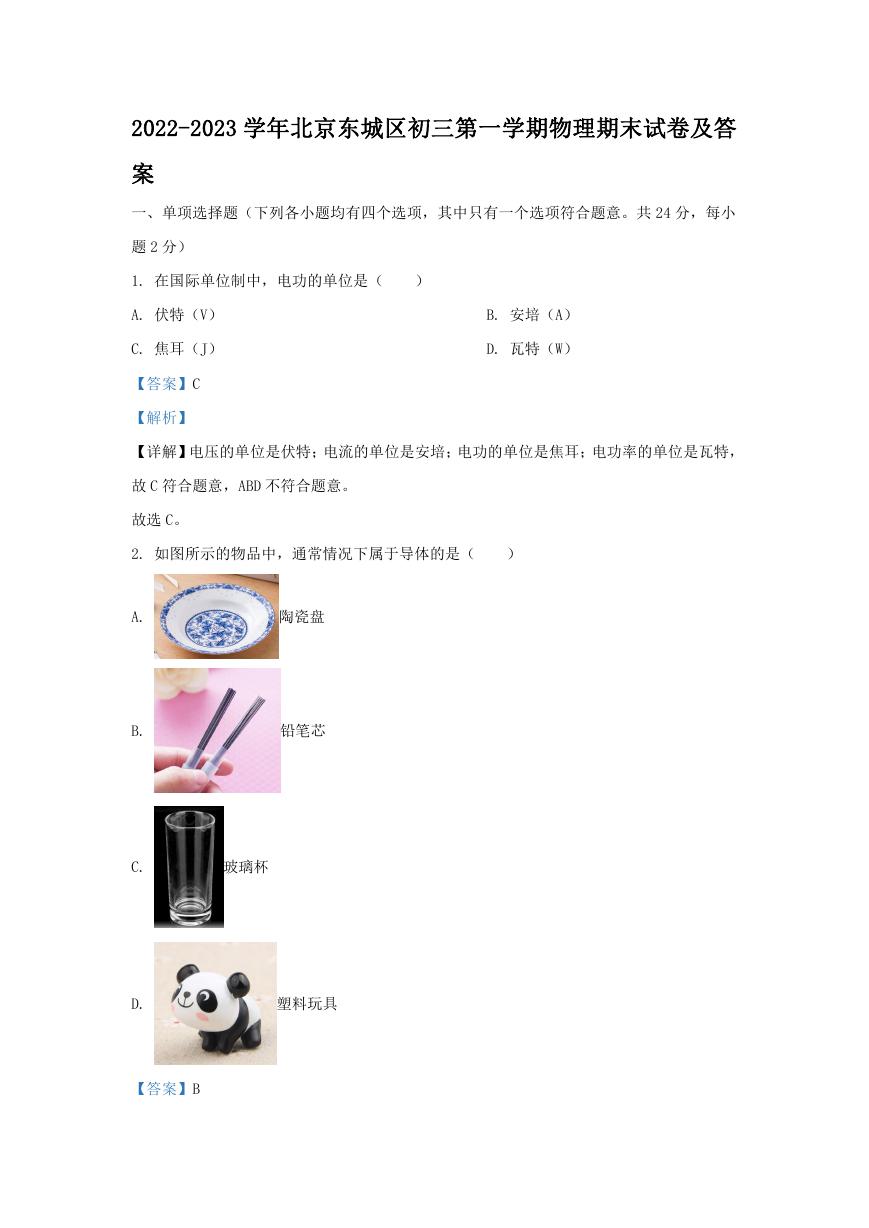 2022-2023学年北京东城区初三第一学期物理期末试卷及答案.doc
2022-2023学年北京东城区初三第一学期物理期末试卷及答案.doc 2018上半年江西教师资格初中地理学科知识与教学能力真题及答案.doc
2018上半年江西教师资格初中地理学科知识与教学能力真题及答案.doc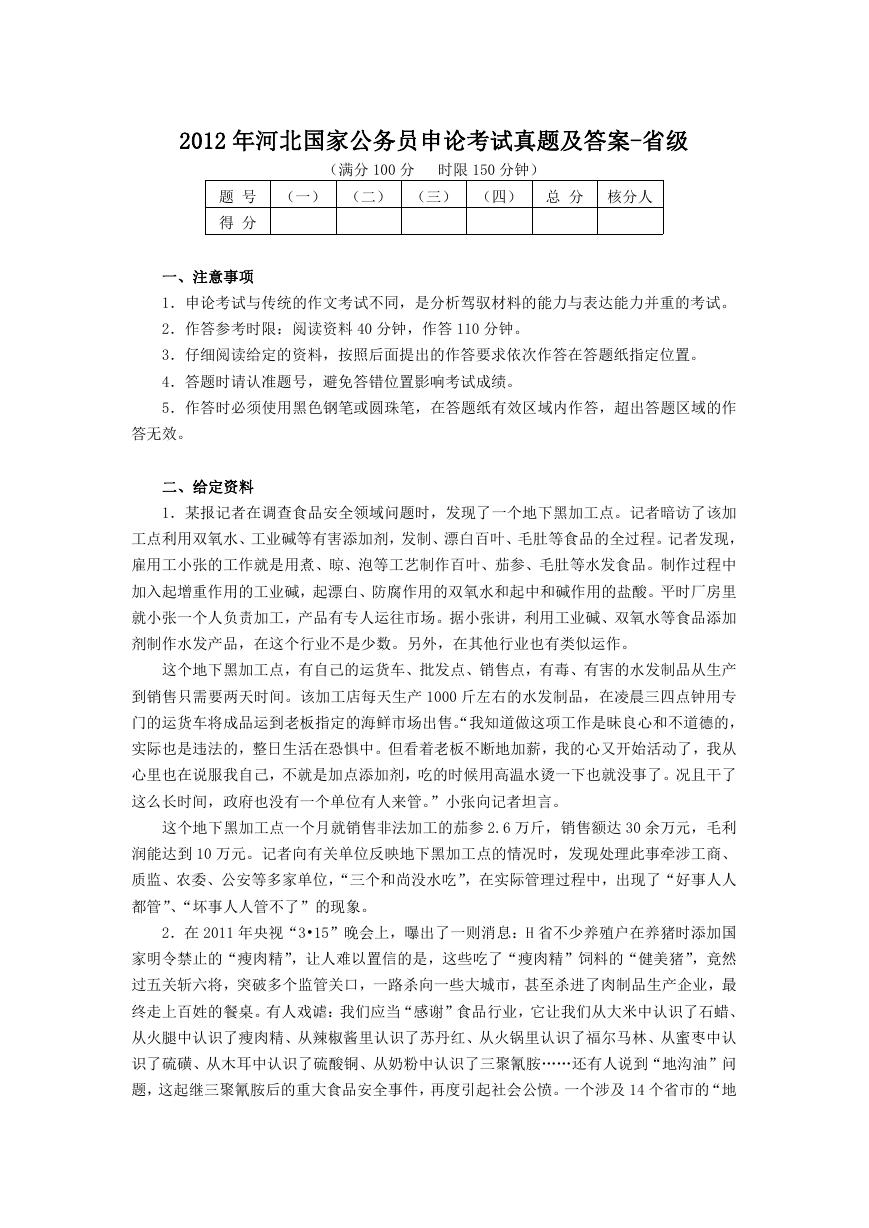 2012年河北国家公务员申论考试真题及答案-省级.doc
2012年河北国家公务员申论考试真题及答案-省级.doc 2020-2021学年江苏省扬州市江都区邵樊片九年级上学期数学第一次质量检测试题及答案.doc
2020-2021学年江苏省扬州市江都区邵樊片九年级上学期数学第一次质量检测试题及答案.doc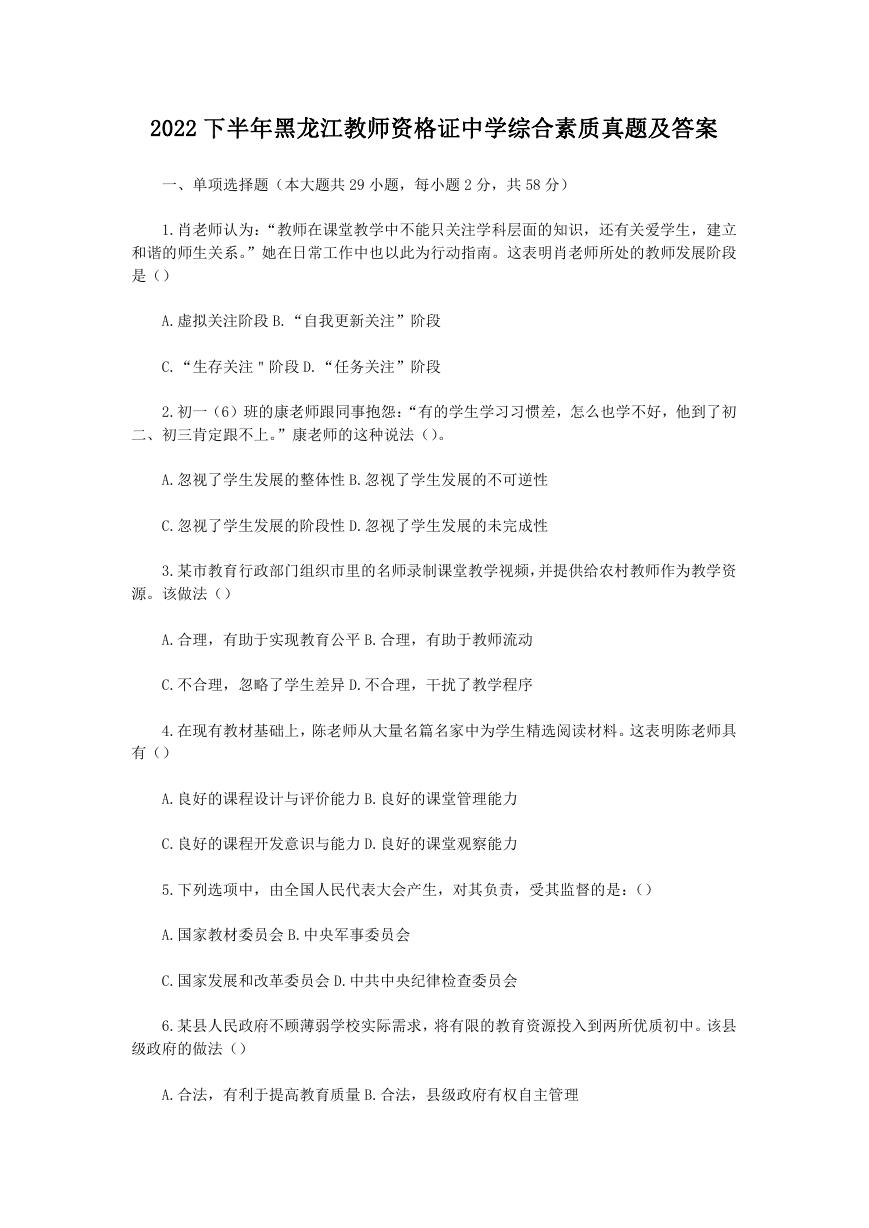 2022下半年黑龙江教师资格证中学综合素质真题及答案.doc
2022下半年黑龙江教师资格证中学综合素质真题及答案.doc